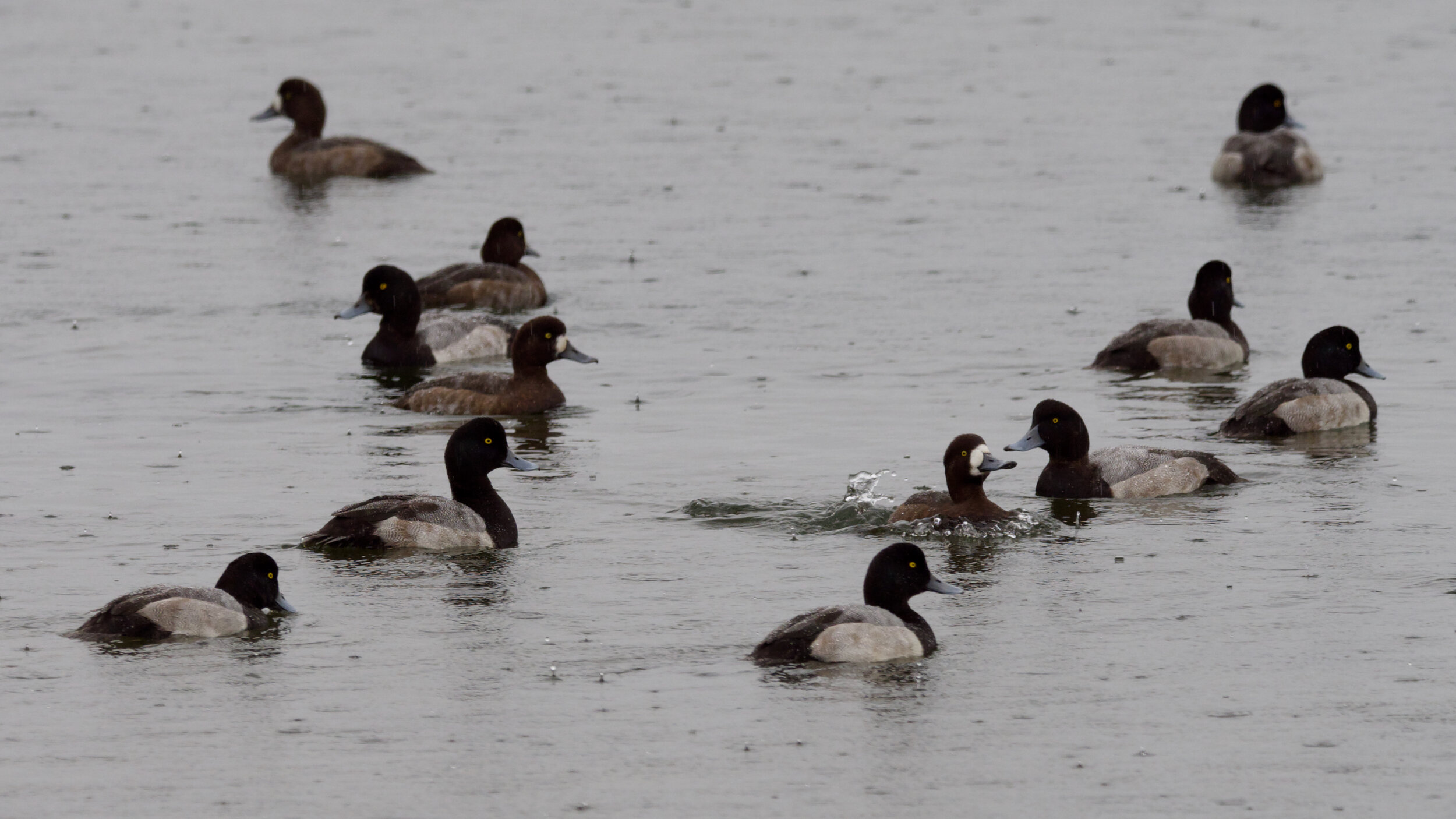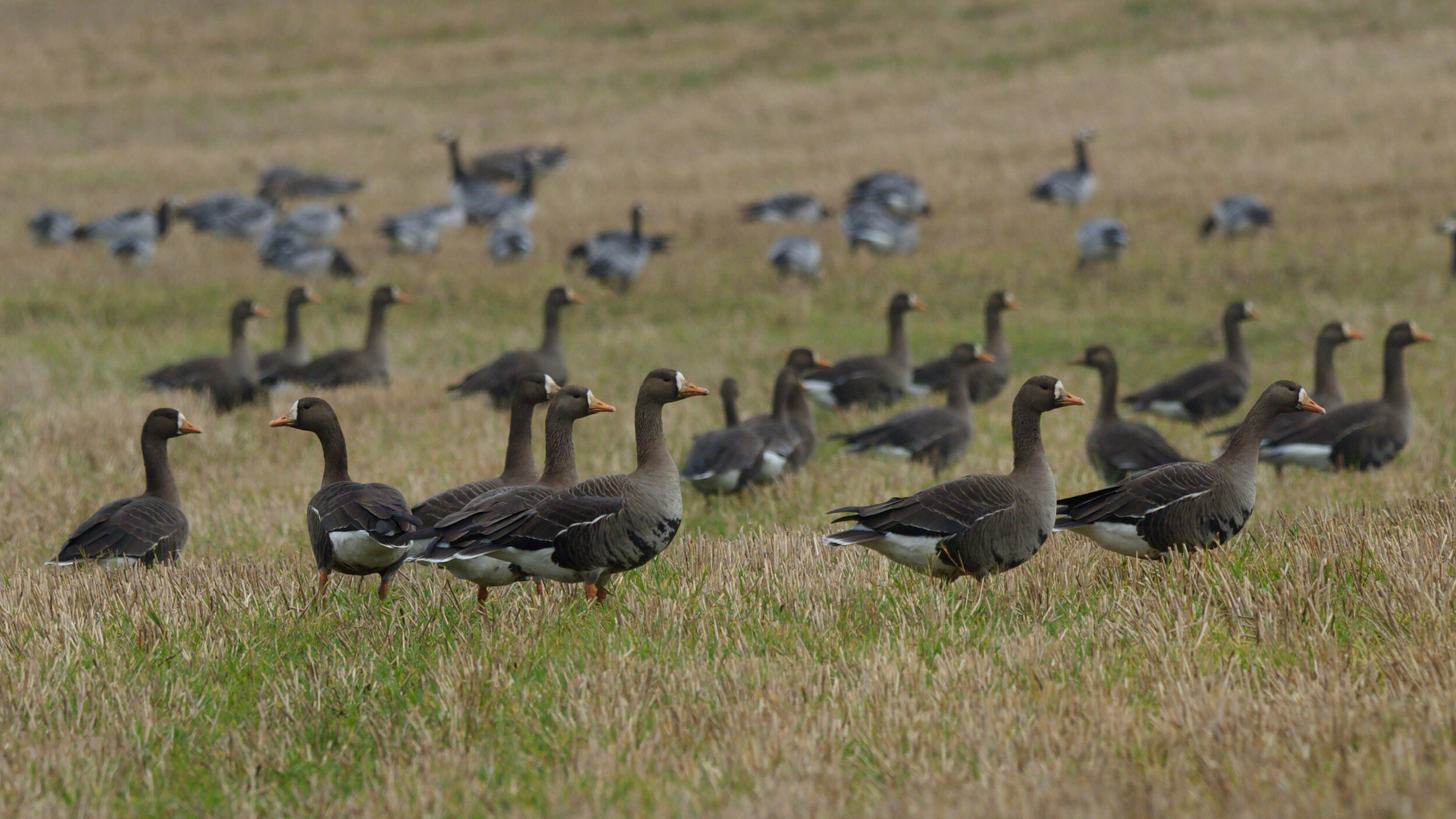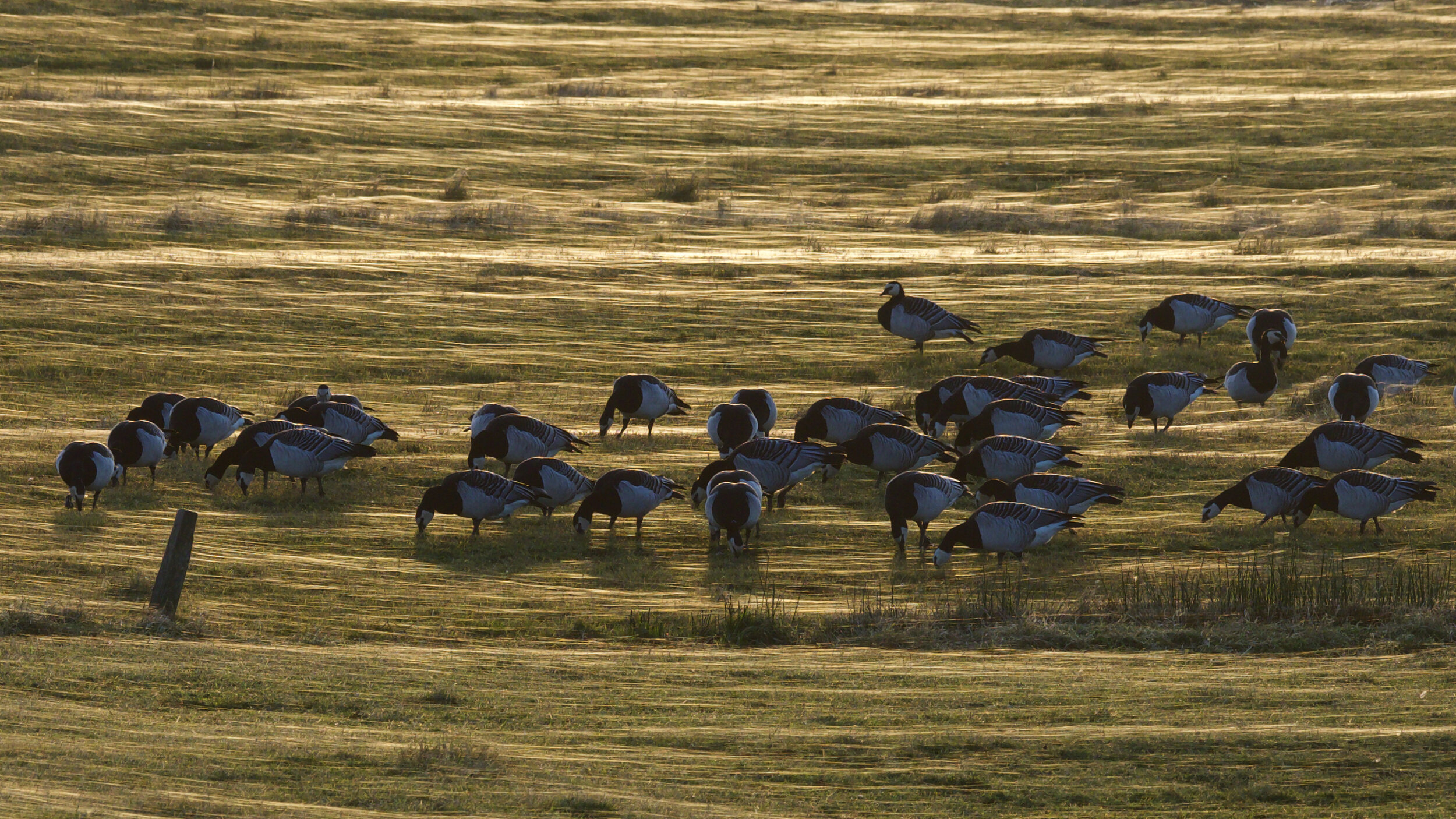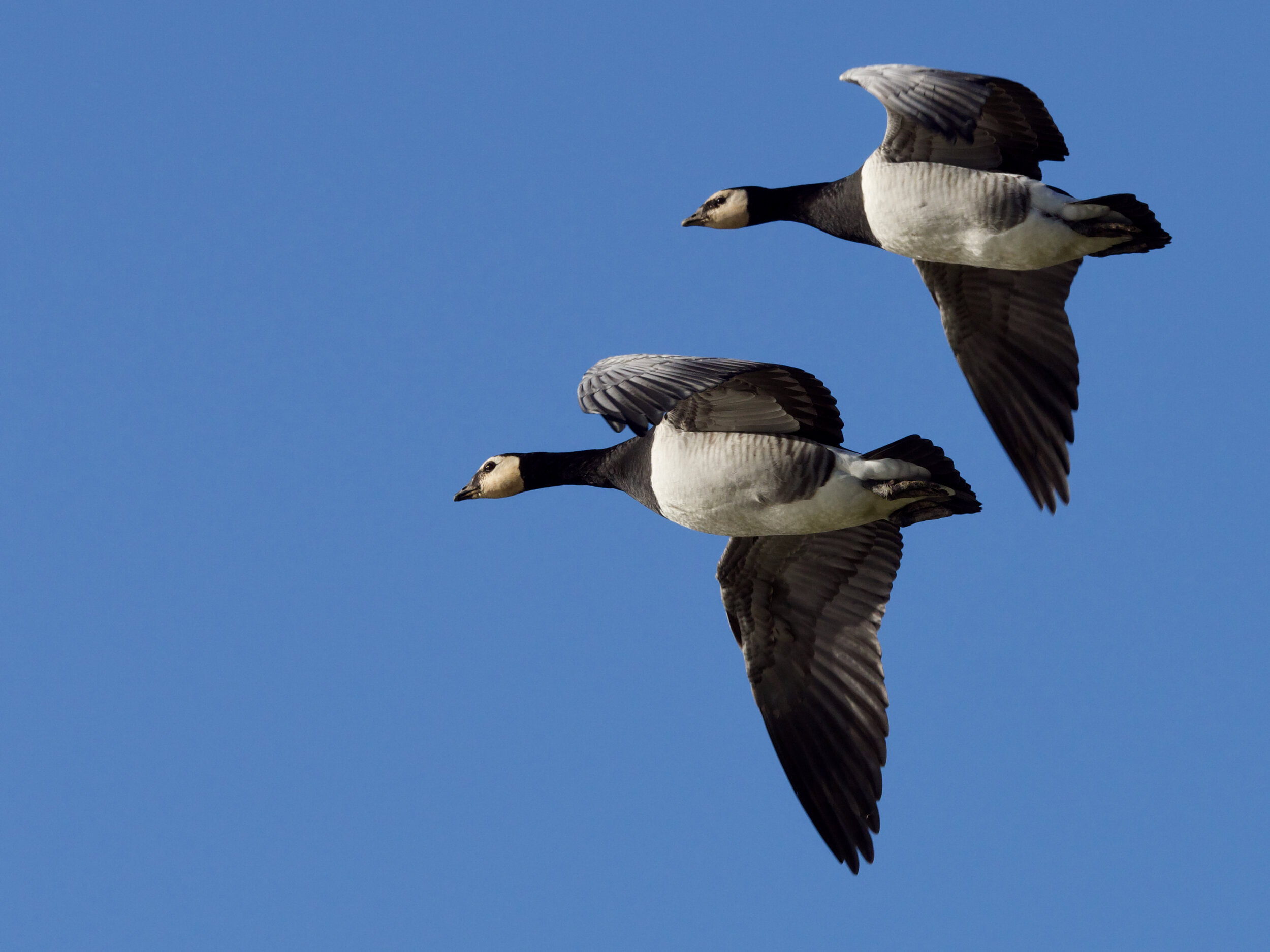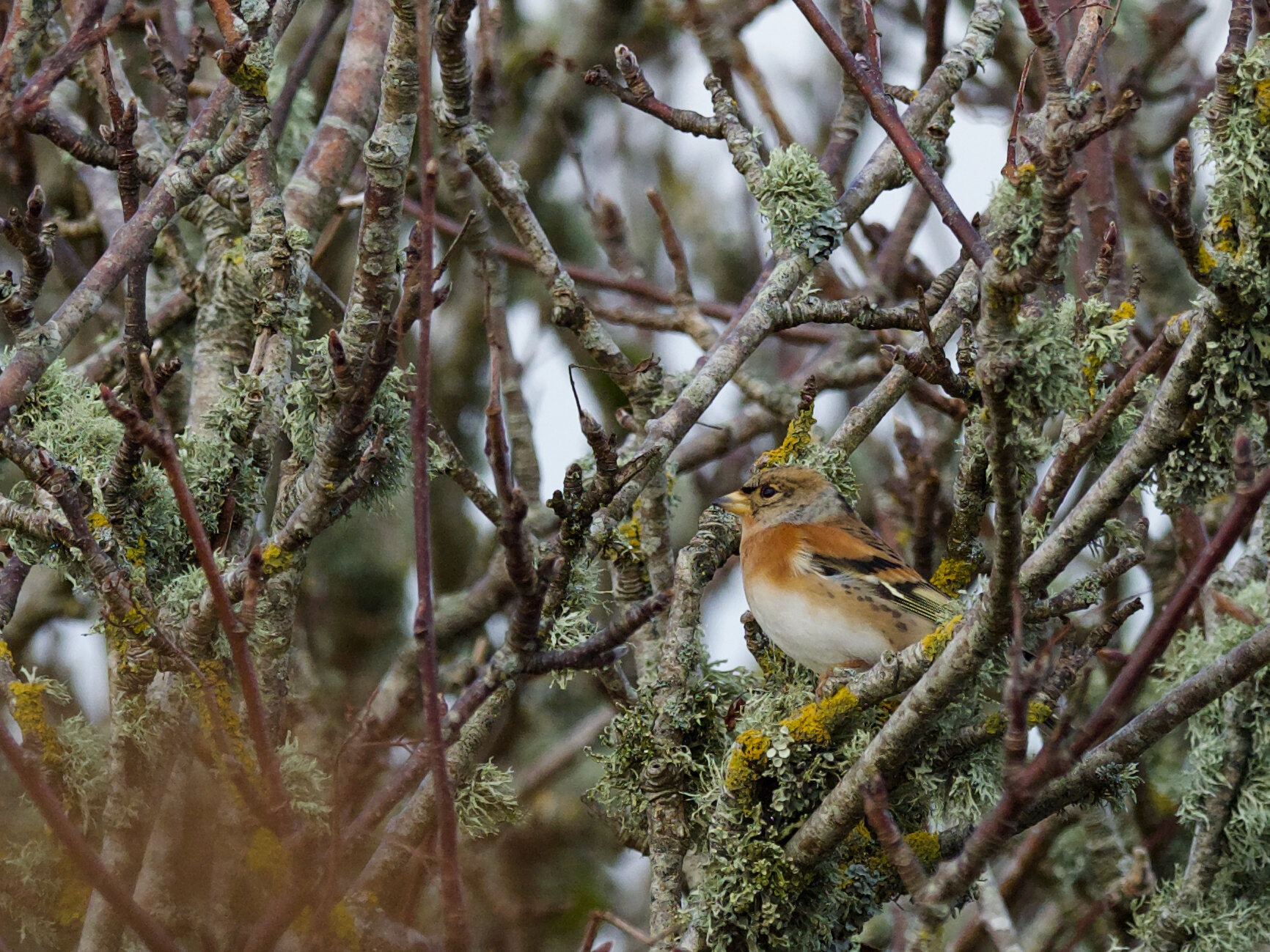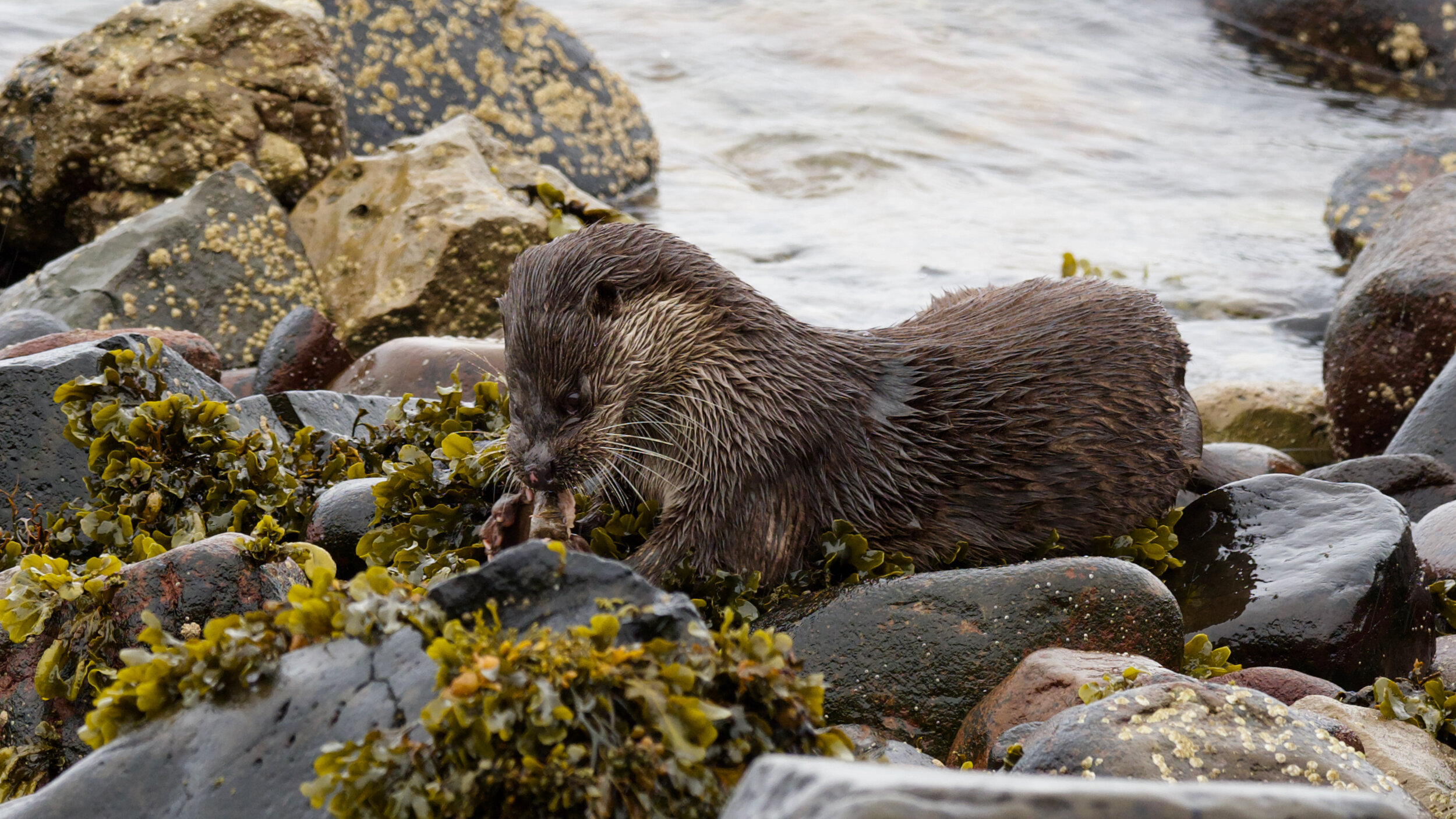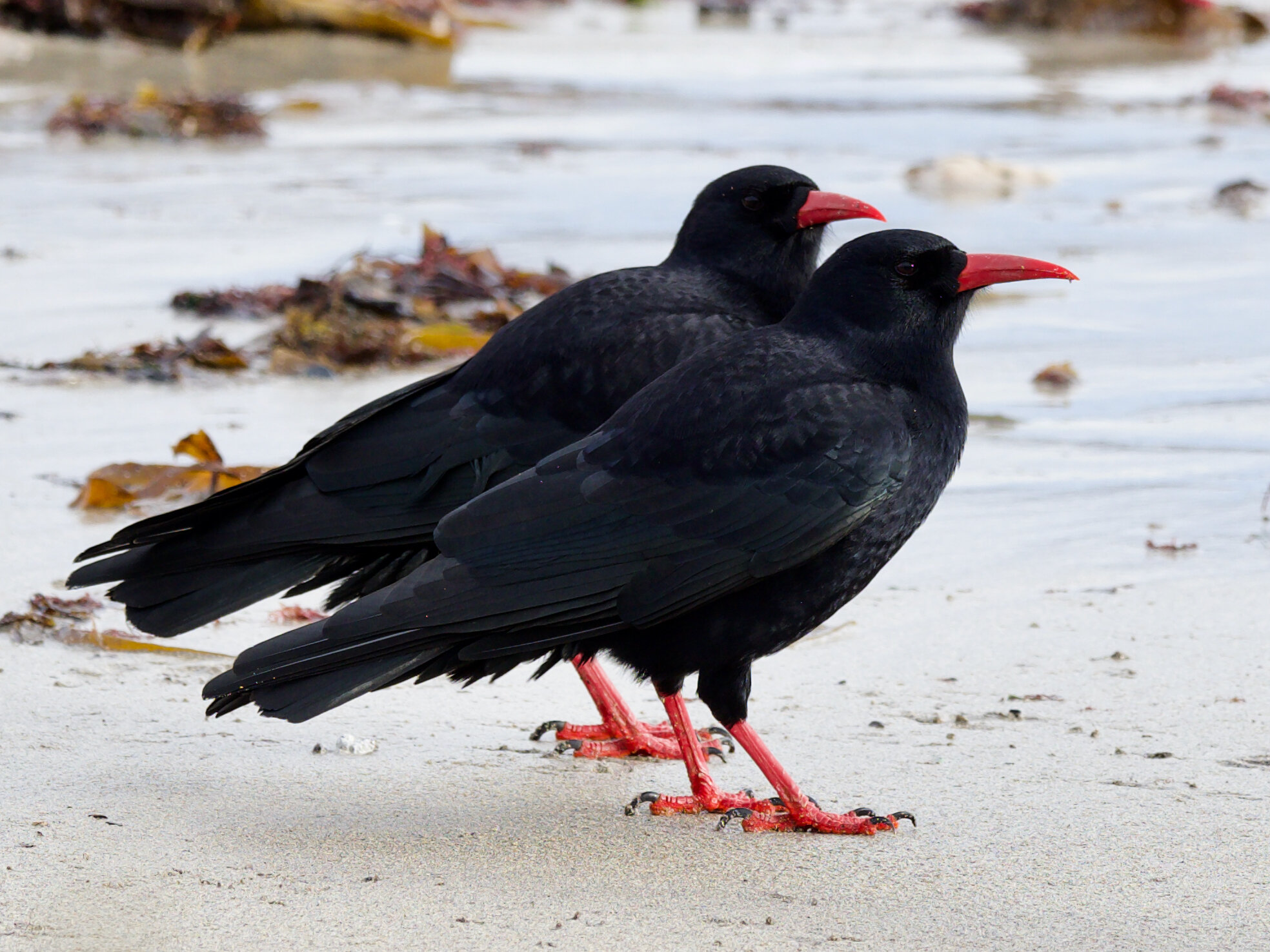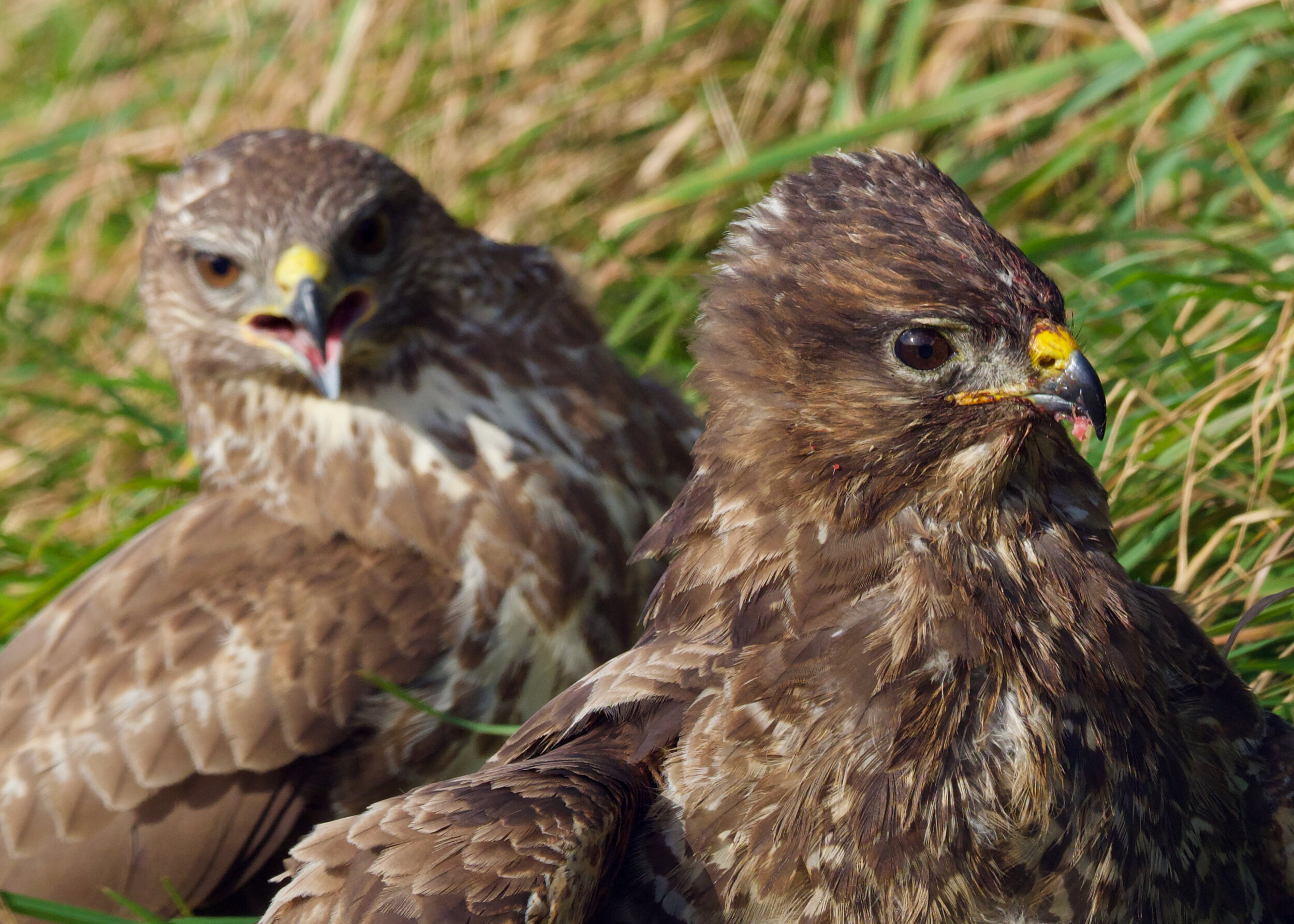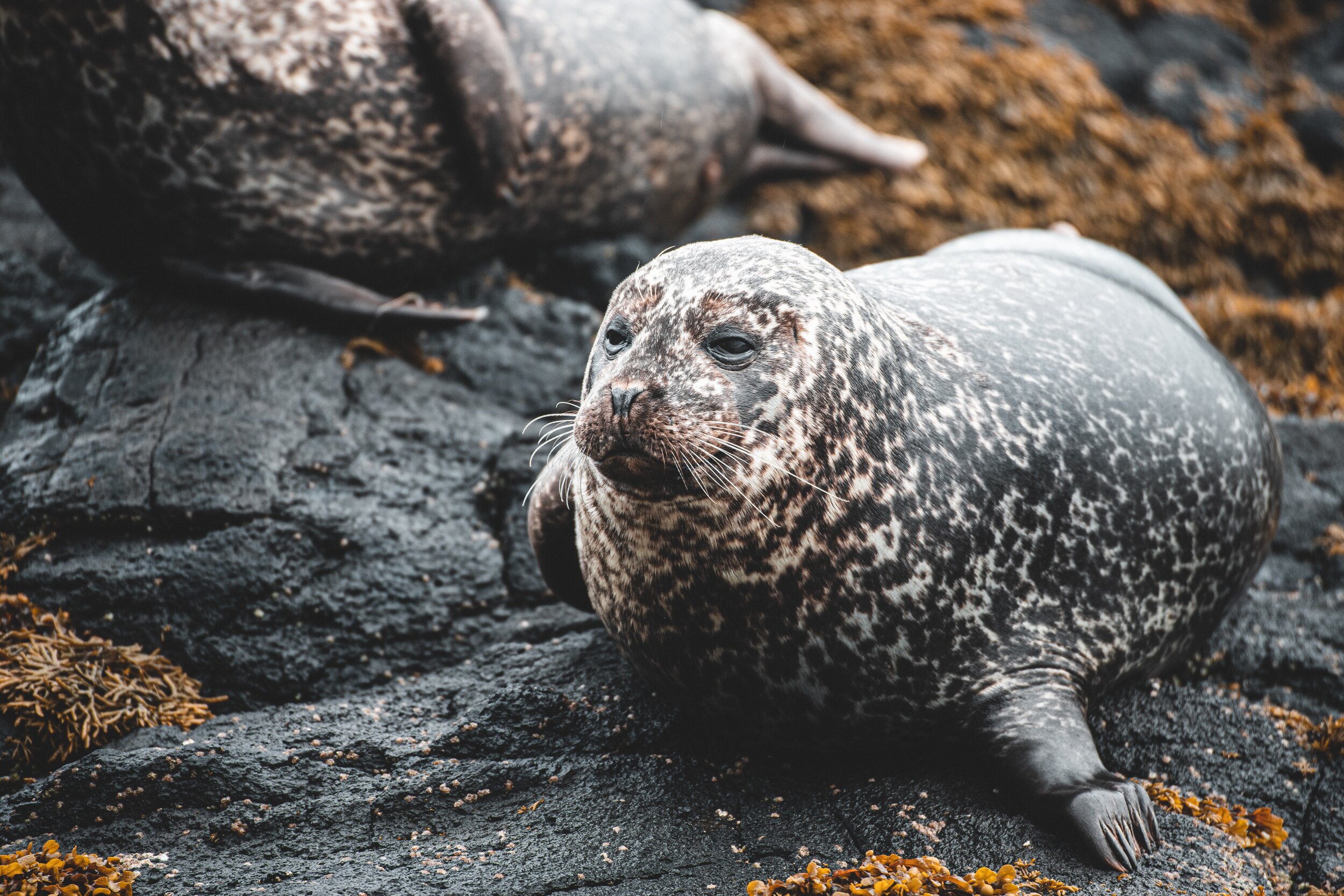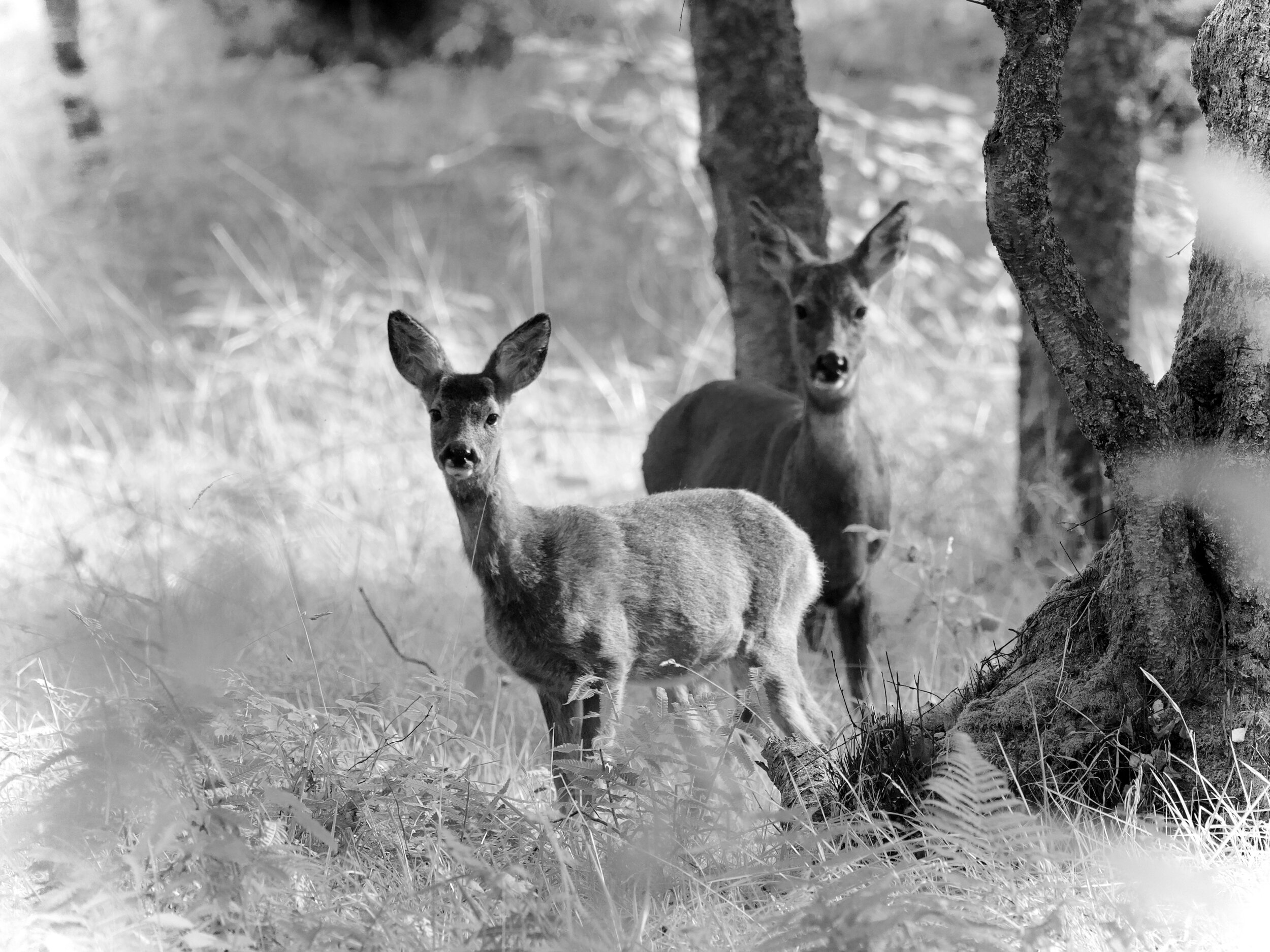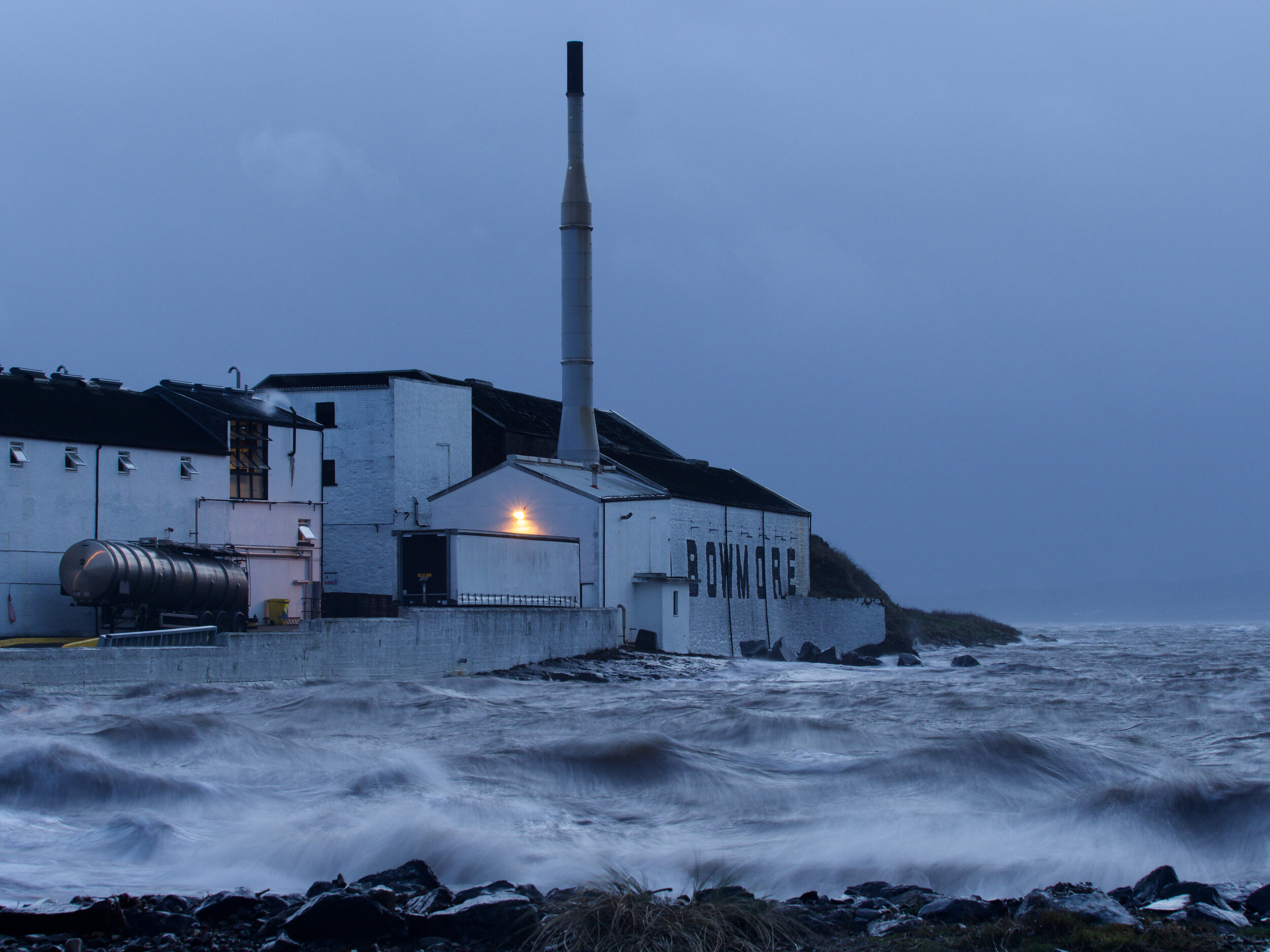Wild About: Islay in Autumn & Winter
Highlights:
Year-round wildlife interest with Autumn and Winter offering avian spectacles and great mammals
Many iconic birds including Golden & White-tailed Eagle, Hen Harrier, 30,000 Barnacle Geese, 5,000 Greenland White-fronted Goose and Chough
Otter, Red Deer, Grey & Common Seals
Incredible photographic opportunities
Always a warm welcome with lots of accommodation options
Whisky (!)
Otters are regularly encountered along the coast
Overview
Islay basks under ever-changing skyscapes, shaped by a thunderous Atlantic swell and enriched by a mild oceanic climate. Also known as the Queen of the Hebrides, it is the southern-most Hebridean island and home to around 3,200 people and eight distilleries (with two additional ones pending!).
It is immediately apparent on arrival that this jewel of an island still abounds in wildlife and is nationally important for a number of species including Red-billed Chough, Barnacle Goose and Greenland White-fronted Goose. As autumn advances into winter it attracts many other species that arrive to take advantage of its riches, these include good numbers of Golden and White-tailed Eagle, Hen Harrier, Merlin and Peregrine, hundreds of waders including Golden and Grey Plover, Purple Sandpiper, Sanderling, Knot and Bar-tailed Godwit, and thousands of wildfowl including Pintail. The pastoral land is home to many species such as Yellowhammer, Reed Bunting and often Brambling in winter. The sheltered sea lochs harbour Great Northern, Red-throated and occasionally Black-throated Diver, Slavonian Grebe, Eider, Long-tailed Duck and Scaup.
The coast is also the best place to search for Otters. Otters are widespread and occur along every section of coast and inland to freshwater sites too. Patience is required but with luck you should get a good Otter encounter. Grey and Common Seals also occur and haul out all around the coast of Islay and Jura. Inland, Red and Roe Deer can be found, the latter often lower down in wet grassland and woodland whilst the former can be found on more exposed moorland and hillsides.
Whether an avid photographer or passive wildlife watcher, Islay has something for everyone and is an ideal place to escape and enjoy wildlife.
Anyone visiting Islay in Autumn & Winter cannot fail to be awed by the Barnacle Geese
Key Sites
RSPB Loch Gruinart
A beautifully diverse reserve where fertile, low-lying fields and marsh bleed into woodland which in turn melds into the moor. There is never a dull visit to this site and expect to be awed by thousands of geese feeding just metres away (top tip: use your car as a hide in one of the pull-in places on the flats road). The air here hums with bird sound, the soft chortling of thousands of Golden Plover blends with the sociable, guttural gargles of Barnacle Geese as they graze the turf.
The floods throng with duck especially Wigeon, Teal and Pintail and occasionally rare species such as Green-winged Teal. Peregrine and Hen Harrier bombard this larder from above launching frequent attacks with jaw-dropping acrobatic manoeuvres. Out on the estuary flocks of Dunlin, Bar-tailed Godwit and Knot all feed alongside Curlew, Oystercatcher and Grey Plovers.
This abundance of life attracts White-tailed Eagles and with a bit of patience you should be rewarded with views of this magnificent species. As if this wasn’t enough, Golden Eagles also hunt Brown Hares here and you have every chance of not only seeing both eagles but potentially seeing them perched side by side or soaring together above the reserve.
Keep your eyes peeled for Otters on the floods and estuary, especially at high tide, and you standing an excellent chance of encountering Roe Deer in the woodland or wet grassland.
Find out more about the reserve here.
Wildlife highlights: huge numbers of geese, duck and waders, good chance of eagles, Peregrine and Hen Harrier, Barn Owl, deer and possibly Otter.
Photography tips: Use your car as a mobile hide from the lane over the flats, two bird hides get you closer to the action on the floods, Barn Owl hunts close to the lane at the eastern edge of the flats.
White-tailed and Golden Eagles forage around Loch Gruinart
Loch Indaal
Almost bisecting Islay, the sea loch of Indaal provides a safe haven for thousands of birds. At the top end of Loch Indaal a saltmarsh gives way to ephemeral mudflats. Barnacle Geese can be found grazing all day and when the tide is low the mud shimmers with waders actively feeding. Keep a look out for White-tailed Eagles here too. The mud exposes many tasty treats that the eagles come down to forage on.
Wildlife highlights: The main spectacle here happens around dusk so get yourself down to one of the pull-ins about an hour before dusk to watch thousands of Barnacle Geese arrive to roost for the evening. Top tip: A new or partial moon is best (the geese can feed by moonlight on full moons so don’t come in is as large numbers). If the weather is good the spectacle is beautifully emphasised by a blazing orange sun in the background.
Photography Tip: Try and time your visit to coincide with very high tides; it will push the geese closer to you.
Scaup occur in small numbers in Loch Indaal and can be quite confiding
RSPB The Oa
Like a behemoth to the Atlantic, The Oa peninsula stands proud with huge seacliffs taking the full impact of the ocean. This site is easily accessed and a great place for a winter walk. Close to the car park is an excellent spot for wintering Twite which can number up to 300 birds. These endearing little finches can be tricky to find elsewhere and the flock at the Oa can be very approachable.
Wildlife highlights: The sea cliffs here are home to Golden Eagles and there is nothing more impressive than watching the king of the skies cruising one of the most powerful landscapes in the country. Views of eagles are unlikely to be close (Golden Eagles are notoriously wary of people) but it is a great chance to watch and photograph them in a dramatic setting.
Read more about the reserve here.
The Oa is an exceptional place to enjoy charming Twite
Machir Bay
Flanked by heather-strewn bluffs and backed by wind-rippled dunes, this long, white sand beach is stunning even on the worst of days. Atlantic swell adds a base of thundering power that only the cries of Chough can break through. The dunes and shore here are an important winter feeding area for them and you should be able to enjoy them probing through the seaweed and short turf or playing in the updrafts. Keep your eyes peeled for Golden Eagles over the bluffs and Hen Harriers behind the beach.
Photography Tip: Just sit and watch and wait on the dunes for Chough to come bounding close by you.
If you enjoy beach combing then Machir and nearby Saligo are brilliant beaches to wend your way along searching for Goose Barnacles, By the Winds Sailors, mermaid’s purses and potentially even Sea Beans.
There are few better places in the UK to enjoy Red-billed Chough
To experience all of this and more, join us on our next Islay & Jura in Winter Tour in February. We also run a spring short break to Islay and Jura in April.
Logistics: Getting there, around & back
Islay is very well equipped being accessible by sea and air, hosting a range of accommodation, eateries and supermarkets, making it an excellent destination at any time of year (even more so if you like whisky!).
Much of this information can be found on the Islay Info website: https://www.islayinfo.com
A second website: http://www.islayjura.com/index.php also contains similar information.
Ferry Service:
Caledonian MacBrayne (Calmac) operate the car ferry service to and from mainland Argyll. Most people arrive on ferries that depart from Kennacraig and arrive at either Port Ellen or Port Askaig.
The most up to date timetables can be found here:
The Ferry journey is approximately two hours and offers some great wildlife watching opportunities so remember to bring your binoculars and camera with you after you’ve parked your car. Check West Loch Tarbert as you depart Kennacraig for all three Divers. The inner loch is excellent for Black-throated Divers whilst the outer loch to just north of Gigha is superb for Great Northern Divers.
Otters can occasionally be seen from the ferry foraging close to the coast in West Loch Tarbert or out on the small islets. Harbour Porpoise are regularly seen further out in more open water.
Also keep an eye open for Eider, Red-breasted Merganser, Slavonian Grebe, Black Guillemot, Guillemot and Razorbill.
The Jura Ferry
Jura is a dramatic and very different island to Islay and is easily accessed via a small roll-on roll-off ferry that operates from Port Askaig to Feolin, Jura.
Details of the cost and schedule can be found here: https://www.argyll-bute.gov.uk/port-askaig-islay-feolin-jura-ferry-timetable
We will provide a ‘Wild About’ feature on Jura in future.
Flights
Islay has a small airport (https://www.hial.co.uk/islay-airport/) into which a number of daily flights arrive, most typically from Glasgow International Airport (which itself is well connected with the rest of the UK).
Flights are operated by Logan Air (https://www.loganair.co.uk).
Car Hire
Once on the island there is car hire available at Islay Car Hire: https://www.islaycarhire.com based at the airport.




